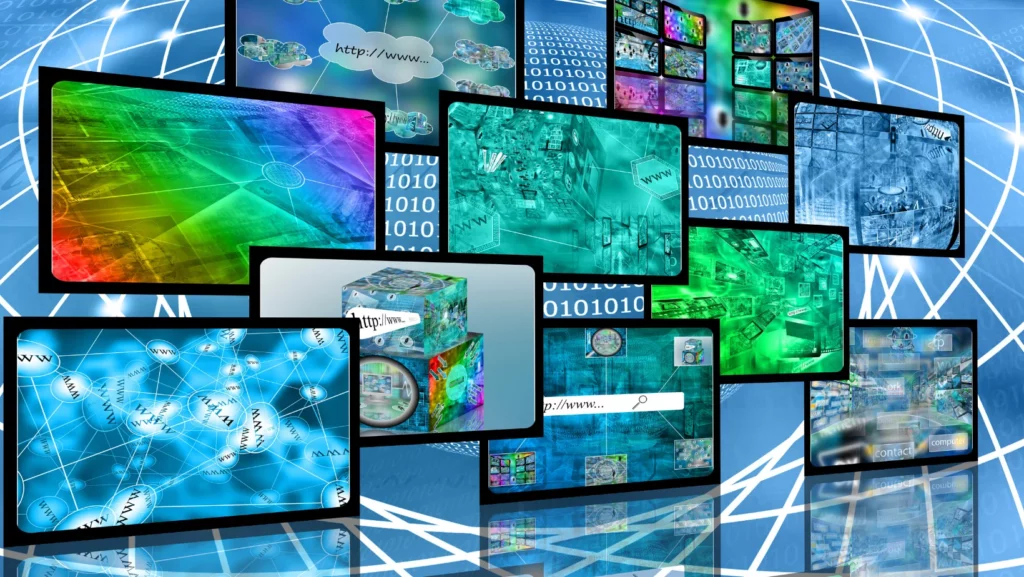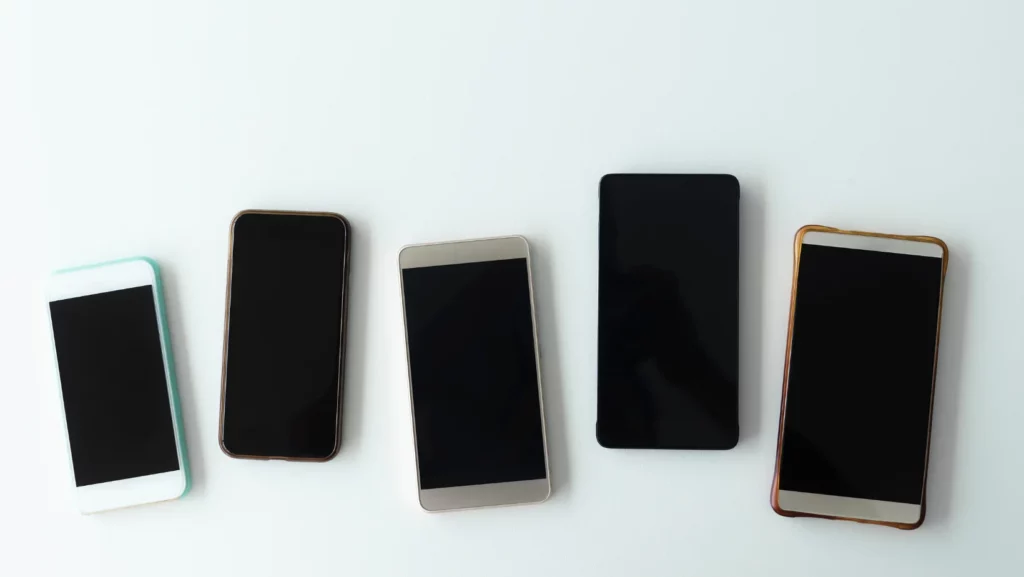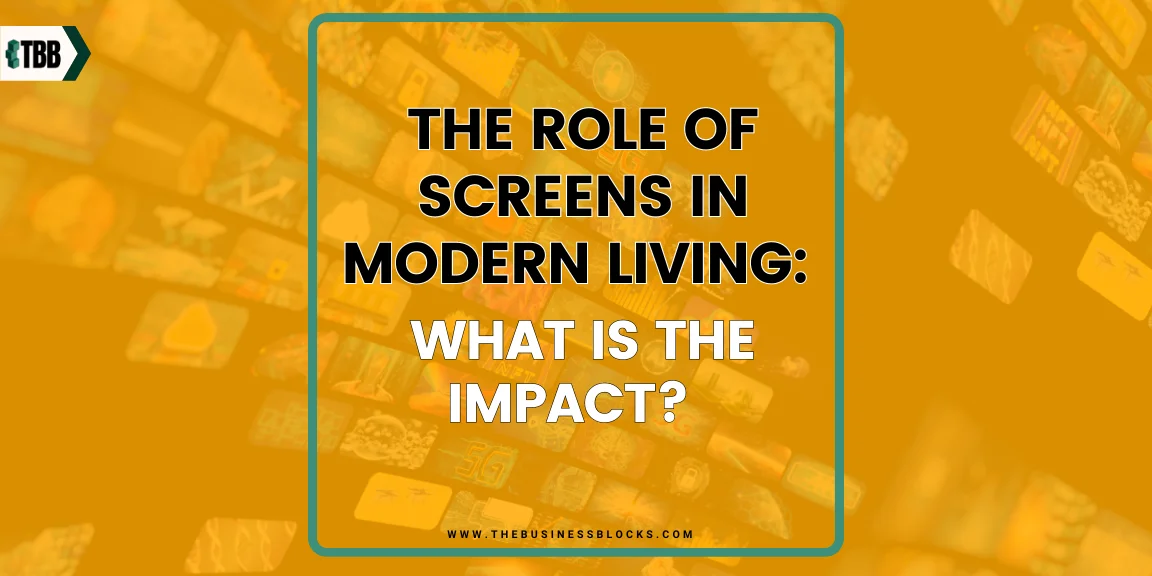In an age where screens pervade nearly every facet of our daily existence, from the intimate glow of our smartphones to the expansive canvases of smart homes, the question that resonates is clear: What is the impact of screens on modern living?
These omnipresent portals to information, entertainment, and connection have transformed the way we perceive and engage with the world around us. This article invites you to embark on a journey into the profound implications of screens in our contemporary lives, delving beyond the surface to unravel the intricate tapestry they weave in our society. Join us on this thought-provoking expedition as we seek to understand the multifaceted impact screens have on shaping the narrative of modern living.
Did you know?
- 41% of parents of 12-15s find it hard to control their child’s screen time (Ofcom Children and Parents: Media use and attitudes report 2017).
- According to Techjury, 85% of American adults can’t spend a day without going online.
Ever wondered how these ubiquitous screens shape our daily experiences?
Uncover the hidden layers of influence and innovation as we examine the role screens play in shaping contemporary living. From communication to entertainment, witness the profound shifts that screens have ignited, redefining the very essence of our interconnected existence.
Take the first step towards unraveling the mysteries of screens in our lives and gain insights that will reshape your perspective on the role of technology in our interconnected world. Don’t miss the chance to be at the forefront of this transformative conversation.
Keep reading and redefine your understanding of The Role of Screens in Modern Living: What is the Impact?
Introduction: Navigating the Digital Landscape

In our exploration of “The Role of Screens in Modern Living: What is the Impact?” we embark on a journey through the intricate web of the digital landscape. But what exactly do we mean by “screens”? In this context, “screens” encompass a diverse array of visual interfaces that have become inseparable from our daily lives.
From the palm-sized screens of smartphones to the immersive displays within our homes, these portals serve as our windows to the digital world. Join us as we navigate through the various manifestations of screens, unraveling their influence and impact on how we communicate, work, and experience the world around us.
Whether it’s the glowing screen in your hand or the expansive canvas on your living room wall, each plays a role in shaping the fabric of modern living. Let’s delve into the realm of screens and decipher their significance in our interconnected and digitized existence.
Evolution of Screens: From Cathode Rays to Smart Displays
The evolution of screens from cathode rays to smart displays is a fascinating narrative that spans several decades, marked by continuous innovation and technological advancements.
Here’s a breakdown of the key stages in this transformative journey:
Cathode Ray Tubes (CRTs):
The story begins with cathode ray tubes, the technology behind early television sets and computer monitors. CRTs used electron beams to illuminate phosphorescent material on a screen, creating the images we saw on those classic, bulky displays.
Liquid Crystal Displays (LCDs):
As technology progressed, LCDs emerged as a lighter and more energy-efficient alternative. These screens used liquid crystals to modulate light and produce images. LCDs became popular in a variety of devices, from computer monitors to flat-screen TVs.
Plasma Displays:
In parallel with LCDs, plasma displays gained popularity for their vibrant colors and ability to produce deep blacks. However, they were eventually overtaken by other technologies due to factors like energy efficiency and cost.
LED (Light Emitting Diode) Displays:
LED displays represented a significant leap forward, offering improved energy efficiency, thinner profiles, and enhanced brightness. LEDs served as backlighting for LCD screens, leading to the development of LED-LCD displays.
OLED (Organic Light Emitting Diode) Displays:
OLED technology introduced a groundbreaking shift by using organic compounds that emit light when an electric current is applied. This allowed for more vibrant colors, deeper blacks, and flexible screen designs. OLED displays have found their way into high-end smartphones, TVs, and other premium devices.
Smart Displays:
The advent of smart displays marked a paradigm shift, integrating screens with intelligent functionalities. These displays not only showcase images but also connect to the internet, enabling interactive features, touch controls, and integration with smart home devices. Smart displays are central to the concept of the Internet of Things (IoT), where devices communicate and collaborate for a more connected living experience.
The evolution from cathode rays to smart displays reflects a continuous quest for improved visual experiences, energy efficiency, and interactive capabilities. As technology advances further, we can anticipate even more innovative developments in the realm of screens, shaping the way we interact with information and the digital world around us.
Screens in Hand: Unraveling the Power of Smartphones

In the era of digital connectivity, the phrase “Screens in Hand” alludes to the transformative influence of smartphones, which have become powerful hubs of information, communication, and entertainment. Smartphones, with their vibrant displays and intuitive interfaces, have seamlessly woven themselves into the fabric of modern living, putting a universe of knowledge and communication at our fingertips.
These handheld screens serve as portals to the following:
- Social networks
- News updates
- Productivity tools
- Myriad of applications
As we unravel the power of smartphones, we discover not only their capacity to convey information but also their ability to shape our daily experiences, fostering a dynamic and interconnected lifestyle.
The Heart of Homes: Smart Devices and Connected Living
The integration of advanced technologies and smart devices that are designed to enhance various aspects of home life. This concept centers around creating a connected ecosystem within homes, allowing residents to control and monitor different aspects remotely, fostering convenience, efficiency, and often, improved security.
Some examples are:
Automation and Control:
Smart devices serve as the building blocks for home automation, enabling residents to control various functions with ease. This includes lighting, thermostats, security systems, and more.
Interconnectivity:
The heart of connected living is the seamless communication between different devices. Smart home hubs act as central command centers, ensuring that various devices work in harmony, responding to user preferences and needs.
Convenience and Accessibility:
Smart devices contribute to convenience by offering remote access through smartphone apps or voice commands. This allows homeowners to manage their homes even when they’re away, providing a new level of accessibility.
Security Enhancements:
Connected living often involves integrated security systems, including smart locks, cameras, and doorbell cameras. Homeowners can monitor their property in real-time, receive alerts, and even control access to their homes remotely.
Energy Efficiency:
Smart devices play a crucial role in managing energy consumption. Smart thermostats, lighting systems, and appliances can be programmed or controlled remotely, contributing to energy efficiency and cost savings.
Entertainment Integration:
The heart of connected living extends to entertainment systems. Smart TVs, audio systems, and streaming devices can be seamlessly integrated, providing a personalized and connected multimedia experience.
Data and Insights:
Many smart devices collect data about user preferences and usage patterns. This data can be leveraged to provide insights into home habits, helping users make informed decisions about energy usage, security measures, and more.
Customization and Personalization:
Connected living allows for a high degree of customization. Residents can tailor settings, preferences, and automation routines to suit their lifestyle, creating a personalized and comfortable living environment.
The integration of these smart technologies contributes to a modern, forward-thinking approach to home management and living.
Challenges and Opportunities: The Dual Nature of Screen Impact

The dual nature of screen impact presents a complex landscape with both challenges and opportunities shaping our modern lives. While screens offer unparalleled access to information, fostering connectivity and innovation, they also pose challenges.
Let us show you some of its challenges and opportunities.
- Opportunity: Instant Access to Information
- Pros: Screens provide quick access to a vast amount of information, fostering learning, and knowledge acquisition.
- Cons: Information overload and potential misinformation can be challenges, requiring users to critically evaluate content.
- Challenge: Screen Addiction and Digital Distraction
- Pros: Screens offer entertainment and connectivity.
- Cons: Excessive screen time can lead to addiction, impact mental health, and contribute to reduced productivity.
- Opportunity: Enhanced Communication
- Pros: Screens facilitate instant communication, connecting individuals globally in real time.
- Cons: Over-reliance on digital communication may impact face-to-face interactions and social skills.
- Challenge: Privacy Concerns
- Pros: Screens enable personalized experiences.
- Cons: The collection of personal data raises privacy concerns, requiring careful management and regulation.
- Opportunity: Technological Advancements
- Pros: Screens drive innovation, leading to advancements in various fields.
- Cons: Rapid technological changes may create a digital divide, leaving some individuals or communities behind.
- Challenge: Sleep Disruption
- Pros: Screens offer entertainment and relaxation.
- Cons: Exposure to screens, especially before bedtime, can disrupt sleep patterns and quality.
- Opportunity: Remote Work and Learning
- Pros: Screens enable flexible work and educational opportunities.
- Cons: The digital divide may limit access to remote work and learning opportunities for some individuals.
- Challenge: Social Comparison and Mental Health
- Pros: Screens provide platforms for social interaction and connection.
- Cons: Social media can contribute to negative self-perception and mental health issues through constant comparison.
- Opportunity: Entertainment and Cultural Exchange
- Pros: Screens offer a global platform for entertainment and cultural exchange.
- Cons: Cultural homogenization and the dominance of certain content can pose challenges to diversity.
- Challenge: Environmental Impact
- Pros: Screens reduce the need for physical resources in some contexts.
- Cons: The manufacturing, disposal, and energy consumption of screens contribute to electronic waste and environmental concerns.
Understanding the dual nature of the impact of screens allows us to harness the opportunities while addressing the challenges. Balancing the positive aspects with proactive measures to mitigate the negatives is essential for a healthy and sustainable integration of screens in our lives.
Looking Forward: Anticipating the Future Landscape of Screens
Looking forward, the future landscape of screens promises a paradigm shift that goes beyond incremental improvements, ushering in transformative changes in how we engage with digital interfaces. One significant trajectory is the emergence of foldable and flexible displays, introducing a new era of user experiences where devices seamlessly adapt to various form factors. This innovation not only enhances portability but also opens the door to novel applications in fields like wearable technology and electronic textiles.
The continuous pursuit of display material innovations, such as microLED and miniLED, is anticipated to yield screens with superior visual performance. Expect brighter, more energy-efficient displays with enhanced color accuracy and contrast ratios, contributing to a more visually immersive and pleasing experience across a spectrum of devices.
Moreover, the integration of artificial intelligence (AI) into screens is poised to elevate personalization and efficiency. AI algorithms will play a central role in predicting user preferences, automating tasks, and customizing content delivery, creating a more intelligent and intuitive user experience.
As we look forward, the screen landscape is not merely about advancements in display technology but a holistic transformation of how we interact with the digital world.
Tips for Healthy Screen Usage

- Follow the 20-20-20 Rule: Every 20 minutes, take a 20-second break and look at something 20 feet away. This helps reduce eye strain and prevents digital eye fatigue.
- Adjust Screen Brightness: Set your screen brightness to match the ambient light in your surroundings. Dim screens in low-light conditions and increase brightness in well-lit environments to reduce eye strain.
- Use Blue Light Filters: Consider using blue light filters or night mode settings, especially during evening hours. Blue light emitted by screens can disrupt sleep patterns, and filtering it can promote better sleep quality.
- Take Regular Breaks: Schedule short breaks during prolonged screen sessions. Stand up, stretch, and move around to prevent stiffness and promote overall physical well-being.
- Mindful Posture: Maintain good posture while using screens. Keep your screen at eye level and ensure your chair and desk are ergonomically set up to prevent neck and back strain.
- Blink Regularly: Remember to blink consciously. Staring at screens for extended periods can lead to dry eyes. Blinking helps moisten the eyes and reduce discomfort.
- Limit Nighttime Screen Use: Minimize screen usage at least an hour before bedtime. The blue light emitted by screens can interfere with the production of the sleep hormone melatonin, potentially affecting your sleep quality.
- Digital Detox Days: Designate specific days for a digital detox. Disconnect from screens to engage in alternative activities, fostering a healthier balance between online and offline life.
- Adjust Text Size and Contrast: Customize text size and contrast settings on your device to enhance readability and reduce eye strain. Find settings that are comfortable for your eyes.
- Stay Hydrated: Maintain proper hydration to prevent dry eyes. Drinking enough water supports overall eye health and helps reduce discomfort associated with screen use.
Incorporating these tips into your daily routine promotes healthy screen usage, reduces the risk of digital eye strain, and contributes to overall well-being in our increasingly screen-centric world.
Frequently Asked Questions About The Role of Screens in Modern Living: What is the Impact?
Q: What is the impact of screens on modern living?
A: The impact of screens on modern living is multifaceted, influencing how we communicate, work, entertain, and access information. Screens, ranging from smartphones to smart home devices, have become integral to daily life.
Q: How do screens affect our mental health?
A: Excessive screen time can contribute to mental health issues, including digital fatigue, anxiety, and sleep disturbances. However, screens also offer tools for mental health support, such as meditation apps and online therapy platforms.
Q: What are the positive aspects of screen technology?
A: Screens enable instant access to information, facilitate communication, enhance productivity, and provide entertainment. They contribute to advancements in education, healthcare, and various industries.
Q: Are screens harmful to our eyes?
A: Prolonged screen use can lead to eye strain and discomfort, often referred to as digital eye fatigue. However, proper ergonomics, regular breaks, and using features like blue light filters can mitigate potential harm to the eyes.
Q: How can one balance screen time for a healthier lifestyle?
A: Balancing screen time involves setting limits, taking regular breaks, and engaging in screen-free activities. Creating designated screen-free zones and practicing digital detox days can contribute to a healthier lifestyle.
Final Thoughts
The role of screens in modern living represents a transformative force that extends beyond mere technological advancements. From fostering instant communication and providing access to a wealth of information to shaping how we work, learn, and entertain ourselves, screens have become integral to our daily existence. While the impact is undeniably profound, it is a nuanced interplay of advantages and challenges. The positive aspects include increased connectivity, efficiency, and innovation, while the negatives encompass issues like digital fatigue, privacy concerns, and potential impacts on mental health.
As we navigate this dynamic landscape, a mindful and balanced approach to screen usage emerges as essential. By setting limits, promoting digital wellness, and embracing emerging technologies responsibly, we can harness the positive impacts of screens while mitigating potential drawbacks, ensuring that they continue to enrich and augment our lives in the evolving digital era.

